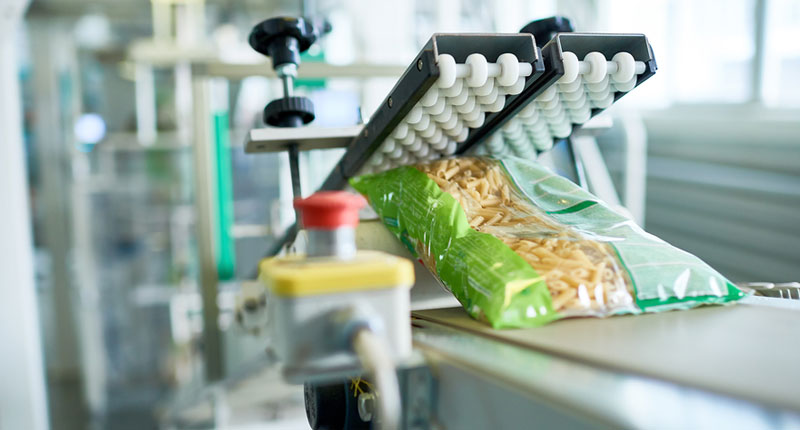Novel food packaging technologies: Innovations and future prospective
Novel food packaging technologies arose as a result of consumer’s desire for convenient, ready to eat, tasty and mild processed food products with extended shelf life and maintained quality. Recent trend of lifestyle changes with less time for consumers to prepare foods posed a great challenge toward food packaging sector for the evolution of novel and innovative food packaging techniques. The novel food packaging techniques, viz. active packaging, intelligent packaging and bio active packaging which involve intentional interaction with the food or its surroundings and influence on consumer’s health have been the major innovations in the field of packaging technology. These novel techniques act by prolonging the shelf life, enhancing or maintaining the quality, providing indication and to regulate freshness of food product. The advancement in novel food packaging technologies involves retardation in oxidation, hindered respiratory process, prevention of microbial attack, prevention of moisture infusion, use of CO2 scavengers/emitters, ethylene scavengers, aroma emitters, time-temperature sensors, ripeness indicators, biosensors and sustained release of antioxidants during storage. The novel food packaging technologies besides the basic function of containment increase the margin of food quality and safety. The novel food packaging techniques thus help in fulfilling the demands throughout the food supply chain by gearing up toward persons own lifestyle. The main objectives of this review article are to provide basic knowledge of different new and innovative food packaging techniques about their way of preservative action, effectiveness and suitability in various types of foods.
Novelty and recent trends in food packaging techniques are the result of consumer preferences toward mild processed food products with enhanced shelf life and convenience (Dobrucka
and Cierpiszewski, 2014). Moreover, modern trend of retail practices and changing lifestyle are the incentives for the evolution of novel and innovative packaging techniques without compromising food safety and quality characteristics (Dainelli et al., 2008). Rapid growth of novel packaging in food segment is contributed by the enormous use of packaged foods, rising need of prepared foods like use of microwave meals and growing use of smaller size food packages (Restuccia et al., 2010). Another important reason for innovative food packaging is the rising issues of food borne microbial outbreaks which demands the use of packaging with antimicrobial effects along with retention of food quality (Appendini and Hotchtkiss, 2002). Innovations in packaging started earlier in the form of electrically driven packaging machinery, metallic cans, aseptic packaging, flexible packaging, aluminum foils and flexographic printing. Additionally, the introduction of various materials, viz. polyester, polypropylene, and ethylene vinyl alcohol polymers led to drastic evacuation from metal, paperboard and glass packaging to plastic and flexible packaging. Moreover, in 20th century more advancement in packaging technology appeared as intelligent or smart packaging and active packaging (oxygen
scavengers, antimicrobial agents, respiration controllers, and aroma/odor absorbers) (Brody et al., 2008). The emerging changes in packaging industry will strengthen the economy
by improving food safety, quality and by minimizing product losses (Vanderroost et al., 2014). In an attempt of changing market opportunities packaging industry has resulted in succession of numerous niche markets (Rooney, 2005). Since these newer ideas of active, intelligent and bioactive packaging had a greater impact on marketing of food, their way of action and suitability for food applications is mentioned in the following sections.
Active packaging came into existence with the aim of satisfying the consumer demand for natural, recyclable, and biodegradable packaging materials (Lopez-Rubio et al., 2004). Thus renewable resource based active packaging material capable of degrading by natural compositing process and with less environmental effect was developed (Jin and Zhang, 2008). Active packaging prolongs the storage life and enhances the margin of food safety by altering the condition of the food (De Kruijf et al., 2002). Active packaging is used as a substitute to conventional food processing techniques (high thermal treatments, brining, acidification, dehydration and additive preservation) (Lopez-de-Dicastillo et al., 2011). The basic underlying principle behind the use of active packaging depends on the incorporation of particular components inside the polymer and intrinsic characteristics of the polymer itself used as packaging vehicle (Gontard, 2000). A new advancement in the use of active packaging is the addition of polymer materials containing some additives that impart anti microbial properties (Suppakul et al., 2003). These polymeric matrices have the potential of releasing active agents (antioxidants and antimicrobials), retaining compounds (ethylene, oxygen and water) or undesirable food components (Flores et al., 2007). The potential scavengers like cyclodextrins used in the latter application act irreversibly and are either inorganic metals or salts (Lopez-de-Dicastillo et al., 2011). Controlled delivery of active agents into the food via packaging films for extended periods of storage and distribution restricts the development of undesirable flavors produced as a result of directly incorporating additives into the food (Peltzer et al., 2009). The use of artificial antioxidative agents like butylated hydroxytoluene, thioester and organophosphate compounds as active packaging additives is limited due to toxicity as a result of their migration into the food products (Gomez-Estaca et al., 2014).



